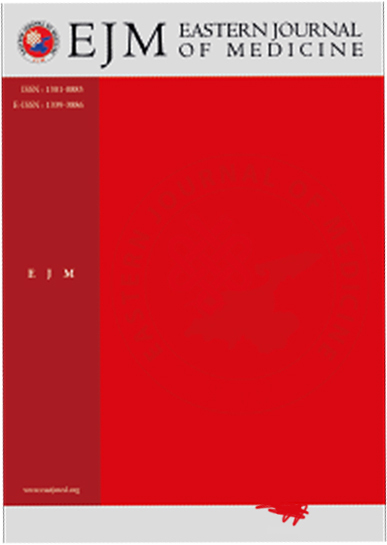Ultrasonographic screening of single umbilical artery: Management and perinatal outcomes
Mehmet Nafi Sakar1, Ismet Gun2, Bulent Demir3, Sureyya Demir3, Ali Galip Zebitay112
3
Single umbilical artery (SUA) is one of the most common abnormality of umbilical cord. SUA is associated with congenital anomalies, chromosomal abnormalities and adverse perinatal outcomes including preterm birth and small for gestational age (SGA). In this case series study, we presented the management and perinatal outcomes of cases with SUA. Fifteen patients with SUA were enrolled to the study. SUA was diagnosed by detailed ultrasonographic examination in the 2nd trimester. We diagnosed SUA when a cross-sectional image of the umbilical cord demonstrated only 2 vessels and/or in oblique transverse section the use of color flow mapping to visualize the one of two umbilical arteries at adjacent to the fetal bladder. Entire fetuses with SUA underwent to detailed ultrasonographic examination. Demographic characteristics and perinatal outcomes were recorded. Fetal karyotyping was performed to the cases with additional ultrasonographic findings or risk factors. The median maternal age was 26.4 years (21-33 years). Of the 15 cases with SUA, one case had major anomaly and another case had two umbilical cord cysts. Fetal karyotyping was performed to 4 cases. No abnormal finding was observed in fetal karyotyping. Thirteen patients had isolated SUA. Of the 13 cases, 1 case was resulted with medical abortion, 1 case underwent to preterm birth, 1 case had oligohydramnios, three cases were resulted with SGA. In conclusion, vast majority of SUA cases are isolated. There is not adequate evidence about the association of isolated SUA with chromosomal abnormalities. However patients with isolated SUA should be followed up for possible adverse perinatal outcomes.
Keywords: single umbilical artery, ultrasonography, management, perinatal outcomeManuscript Language: English














